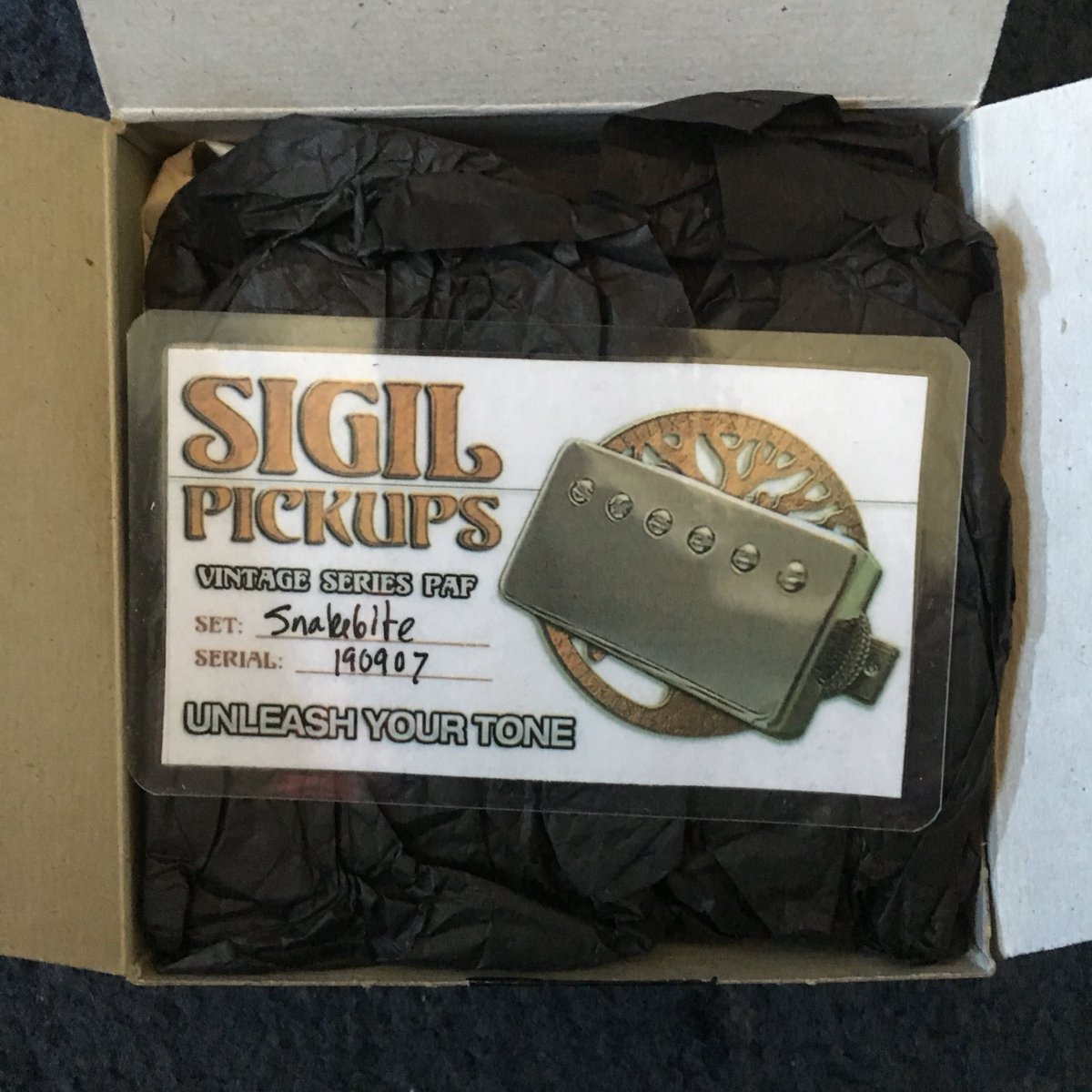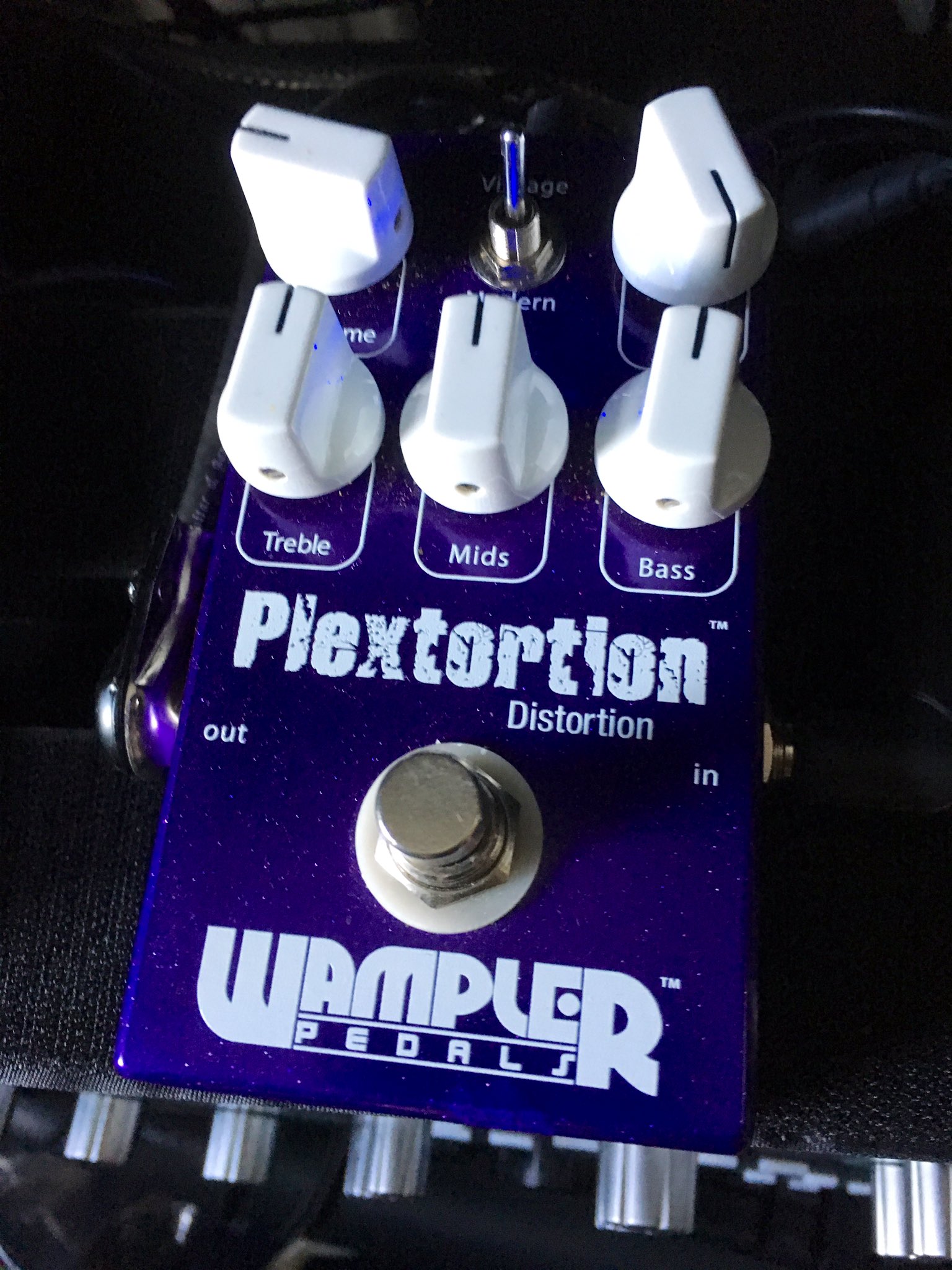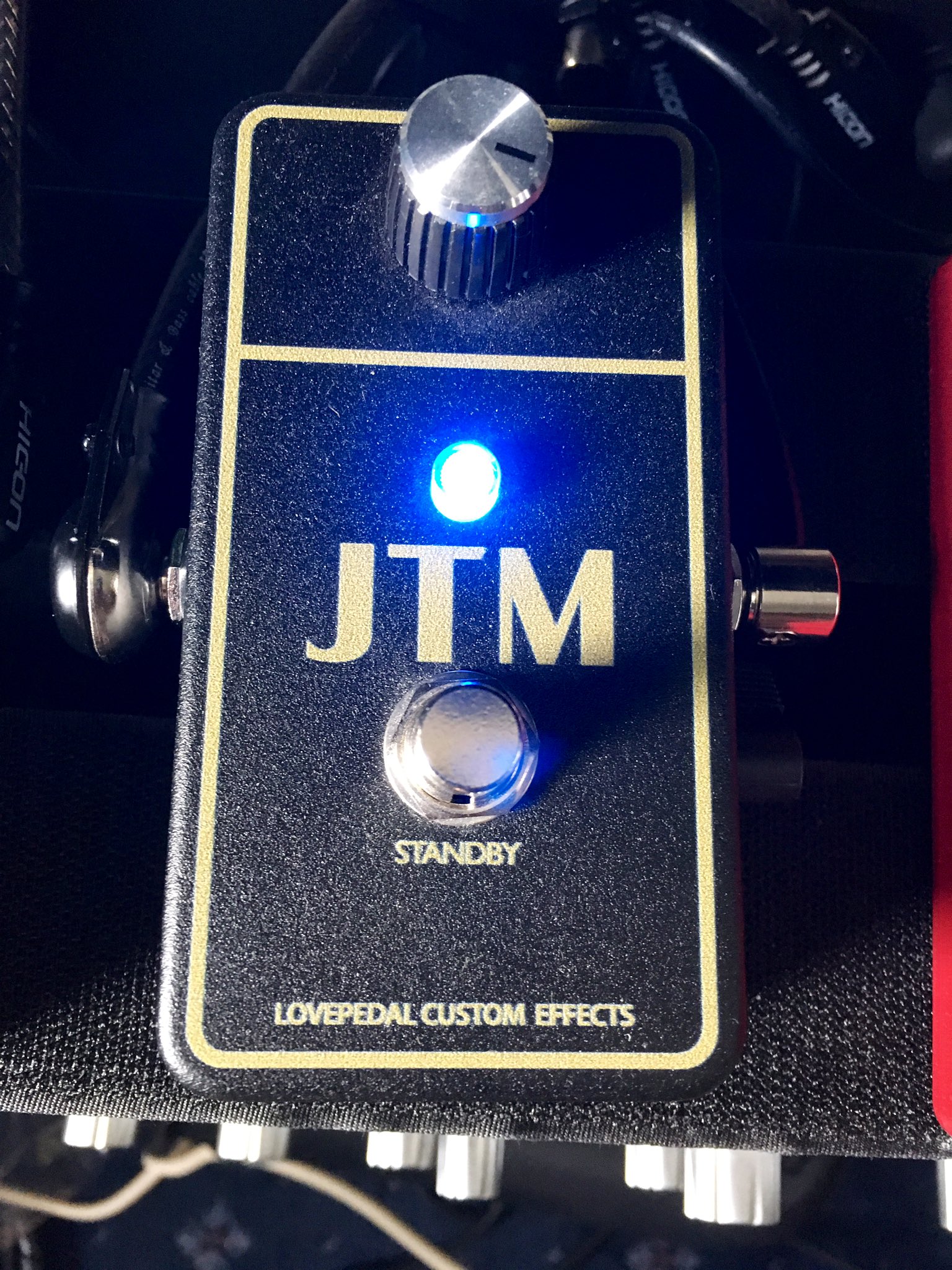August was another really slow month on the second hand market, and things didn’t pick up for September. Instead, I’ve ended up concentrating on the first guitar of my #PlayAlternative series.
Continue reading “New Arrivals For September 2019”New Arrival: Sigil Pickups Snakebite Humbucker Set
David @SigilPickups made the pickups that are in Ghost, my Les Paul Custom. I said at the time that I’d buy again from him, and I finally have 🙂 Really looking forward to hearing how these sound in my 59 RI.

#CoffeeAndKlon 16: Boosting With A Graphic Equaliser Pedal
This conversation was originally posted to my Twitter feed.
Good morning! I hope you’re having a great weekend. Got another #CoffeeAndKlon for you this week. I hope you enjoy it.
Continue reading “#CoffeeAndKlon 16: Boosting With A Graphic Equaliser Pedal”#CoffeeAndKlon 15: First Impressions Can Be Wrong
This conversation was originally posted to my Twitter feed.
Good morning! I hope you’re having a great weekend so far. What’s on my mind for this week’s #CoffeeAndKlon? I want to talk about how a first impression doesn’t always stand up to scrutiny.
Continue reading “#CoffeeAndKlon 15: First Impressions Can Be Wrong”#CoffeeAndKlon 14: Sans Klon
This conversation was originally posted to my Twitter feed.
Good morning! I hope you’re having a great weekend. And, if you’re here in the UK, enjoying the unseasonable bank holiday weather. Got another #CoffeeAndKlon for you this morning. Only there’s no Klon today …
Continue reading “#CoffeeAndKlon 14: Sans Klon”New Arrivals For August 2019
The plan this month was to finally buy a nice rack for my home studio, so that I can get the Synergy amp wired up once again. That didn’t go so well. Silver linings and all that though …
I found a rack that I liked on DV247’s website, paid for it … and later that day received an email from them asking for almost 30% extra money before they’d ship it. Now, the regulations on selling online are clear: you’re not supposed to do that. So yeah, that purchase fell through.
Before I could find and order an alternative from somewhere else, some of the remaining pedals from my bucket list turned up for sale. Interesting (to me) pedals have been hard to find at prices I’m willing to pay all summer long. Having three come along at once was an opportunity I’m glad I didn’t have to pass up.
Continue reading “New Arrivals For August 2019”New Arrivals For July 2019
This month has been a month of two very different stories: guitars and pedals.
On the guitar front, I’ve been very fortunate to find a couple of guitars that blew my socks right off. Proper love-at-the-first-note through an amp fairytale stuff. Fairytales don’t always have a happy ending, mind, so do check back in the months ahead to learn whether these do (or don’t)!
Pedals have been much more of a mixed bag. Good deals have been hard to come by this month, with a lot of people chasing a smaller pool of 2nd hand gear. Maybe it’s the summer months, or maybe it’s the renewed uncertainty here in Britain atm? Either way, I hope things pick up.
I’m doing something a bit different this month. Rather than try and squeeze my first impressions into 3 or 4 paragraphs (to keep these ‘New Arrivals’ posts short), I’ve started breaking them out into separate posts that I’m linking to from here. It gives me a bit more space to talk about each piece of gear. Do you like it? Or do you prefer the ‘all-in-one’ format I’ve been using up to now? Let me know in the comments below.
Continue reading “New Arrivals For July 2019”New Arrival: Wampler Plextortion
A new arrival this morning. I think this is the last pedal I need to cover all the different Marshall tones using Wampler pedals. #homeToneBlog

First Impression: Lovepedal JTM
Backstory :- we’ve been experiencing a bit of a heatwave, and it’s been a little too warm to play much guitar.
It’s much cooler today, and I’ve got half an hour to kill while I’m processing audio for a talk video. Let’s have a play with the Lovepedal JTM.
Continue reading “First Impression: Lovepedal JTM”New Arrival: Lovepedal JTM
Look what’s sheltering from the #heatwaveuk with me today: the Lovepedal JTM drive pedal.

I’ve plugged it in to check it works. It’s 26C in here, which is too hot for me. Don’t want a valve amp making the room even warmer today.
It’ll have to wait for cooler weather before I spend quality time with it.
